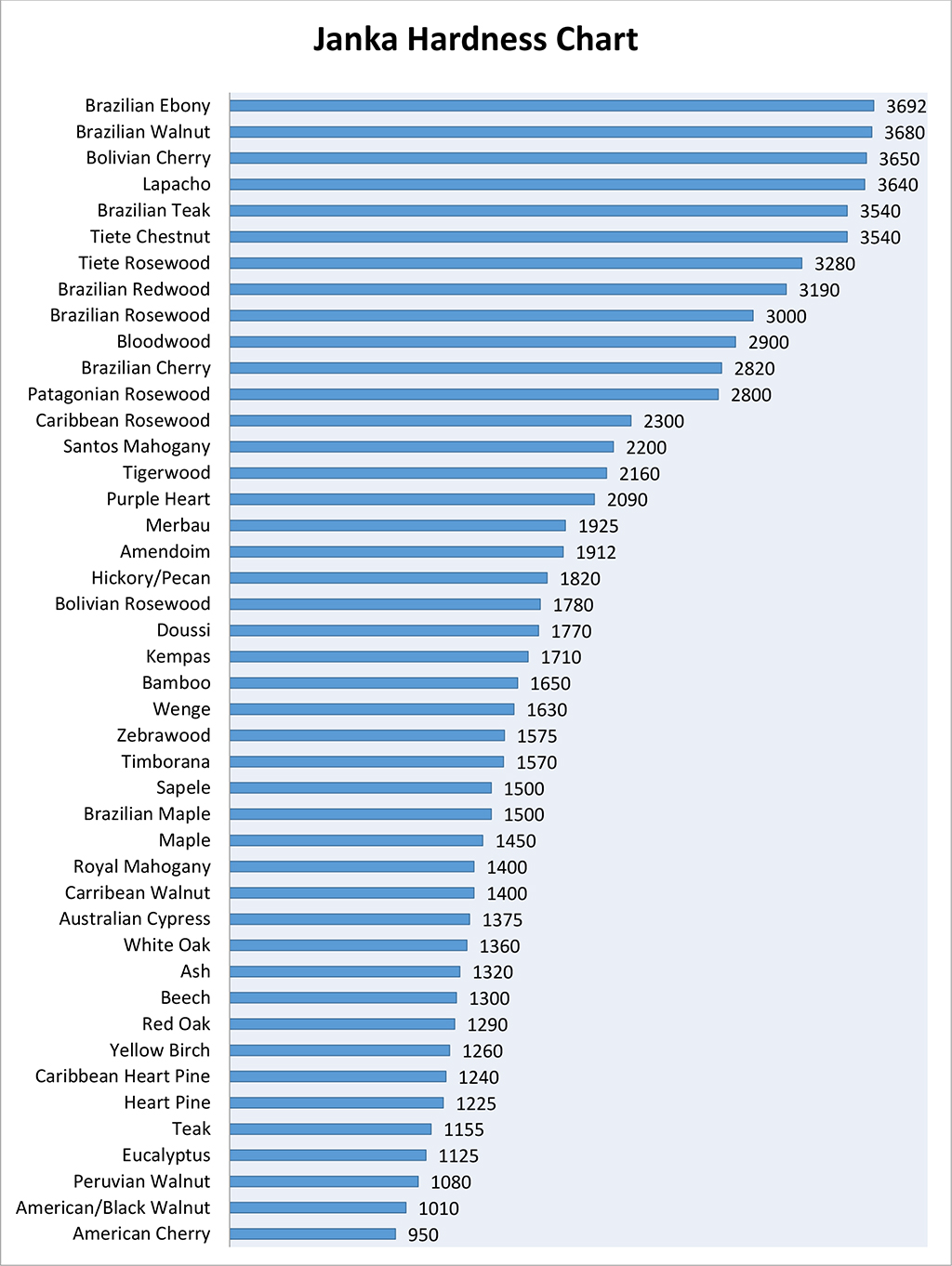hardwood floor wood hardness scale
The janka hardness test (from the austrian-born emigrant gabriel janka, 1864–1932) measures the resistance of a sample of wood to denting and wear. it measures the force required to embed an 11.28 millimetres (0.444 in) diameter steel ball halfway into a sample of wood. a common use of janka hardness ratings is to determine whether a species is suitable for use as flooring.. Understanding how the janka hardness scale works is simple! in short, a higher number (rating) on the janka scale equates to a harder wood species; the lower the number, the softer. a janka rating provides a great barometer for determining how well a particular floor may withstand denting and wear.. Below the u.s. forest service list the relative hardness for numerous wood species used in flooring. these ratings were calculated using the janka hardness test, which measures the force needed to embed a .444 inch steel ball to half its diameter in a piece of wood.. hardwood floor wood hardness scale
All these ratings have been organized onto a scale called the janka hardness scale. the janka hardness scale starts at 0 and goes through 4000, with 4000 being an extremely hard wood, so hard it is difficult to saw. the best wood for hardwood flooring typically falls above 1000 on the scale. image source: floorings.com. The main element that influences hardwood floor hardness is the hardness of the wood species itself. it is important to understand that wood is a natural product—no manufacturer can influence the density or hardness of a wood species. it is inherent and unique to the species of the hardwood you choose. 2. how is wood hardness measured?.


0 komentar:
Posting Komentar